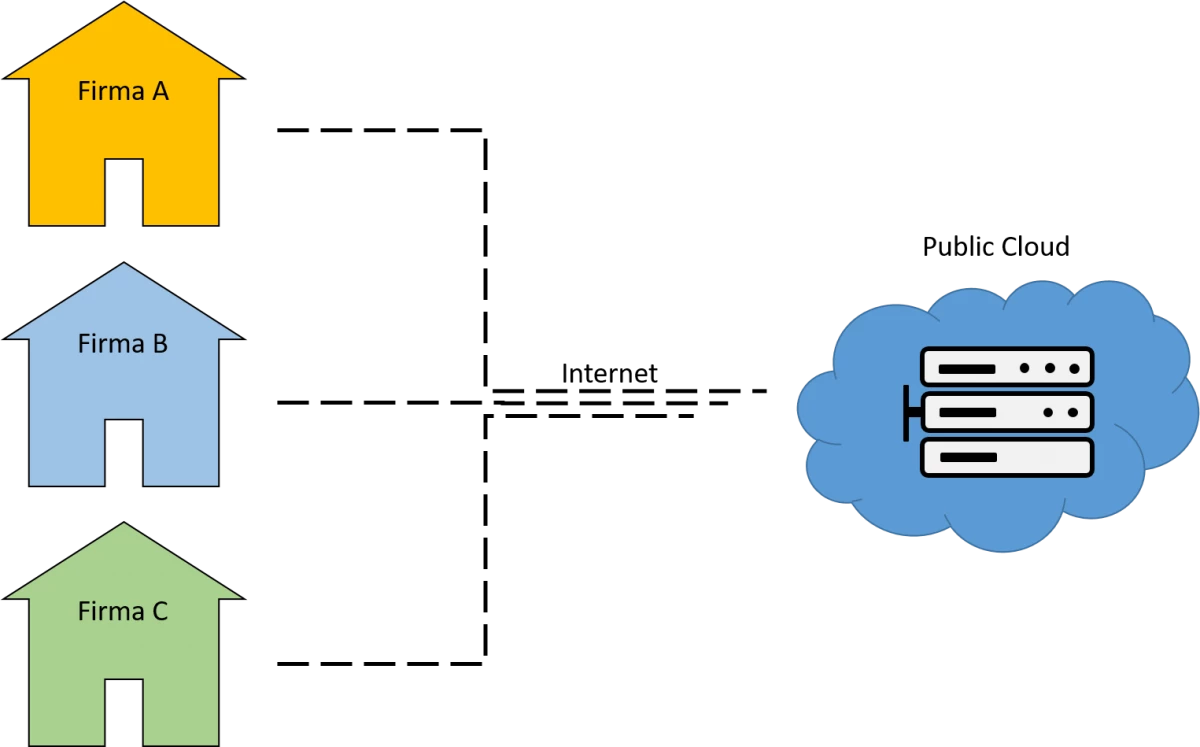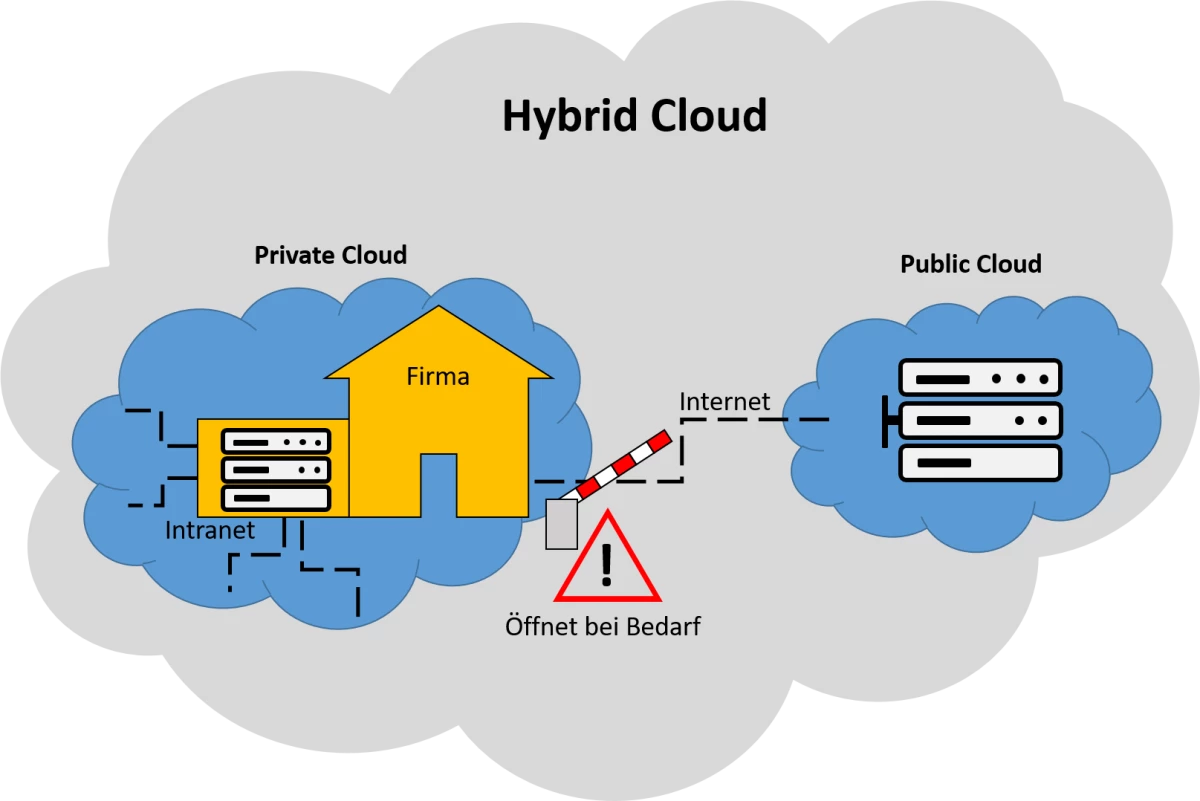Cloud delivery models
In addition to the subdivision into service models (IaaS, PaaS, SaaS), cloud computing can also be differentiated with regard to the delivery model. The distinction is basically made with regard to the server operator and access rights. The four currently frequently used delivery models are briefly described below:
Public Cloud
In this delivery model, an IT service provider makes the cloud environment available. Since the IT service provider is the owner of the public cloud, it takes care of maintenance work. Thus, there are no additional costs for the user for work on the cloud infrastructure.
Cloud services can be provided to service recipients immediately and flexibly via the internet. Especially the possibility of easy scaling is a great advantage for many users. This ensures that payment is only ever made for the service that is actually used (pay-per-use). A lack of capacity is thus a thing of the past. In addition, IT service providers usually offer short contract periods.
 Simplified representation of the public cloud
Simplified representation of the public cloud© Eigene Darstellung (Credits: Lukas Rengbers)
Private Cloud
With the private cloud, the servers are located in the company. They are managed by the company's own IT department or by external IT service providers. The data is accessed via the company's own intranet (computer network). Especially companies with highly sensitive data use this cloud delivery model. The intranet connection makes it impossible for outsiders to gain access to the cloud server. In addition, the server is protected by the company's own firewall.
All in all, customers benefit from a highly customisable server solution where all delivery terms can be individually designed.
 IT administrator maintains servers of a company.
IT administrator maintains servers of a company.© Computer vector created by macrovector - www.freepik.com
Hybrid Cloud
With the hybrid cloud, functions of the private cloud and the public cloud are combined in order to use the respective advantages of both delivery models. The private cloud offers the disadvantage that it is not quickly scalable if more computing capacity is needed. Here, the use of public cloud functionalities can offer the advantage that these load peaks can be balanced out by using public cloud resources. Operations can thus continue without disruption. At the same time, however, highly sensitive data can remain on the company's private cloud so that it can only be accessed via the company's own intranet. In order to guarantee availability even in the event of a failure of the private cloud, the use of a hybrid cloud is recommended.
 Illustration of the expandability of the private cloud by the public cloud.
Illustration of the expandability of the private cloud by the public cloud.© Eigene Darstellung (Credits: Lukas Rengbers)
Community Cloud
The community cloud is conceptually a public cloud, with the difference that only a limited group of users is granted access rights. This delivery model is particularly advantageous because the costs for maintaining the cloud can be shared among the participating actors. Often, the community cloud comes up in local authorities, schools, universities or research groups that share data with each other.
